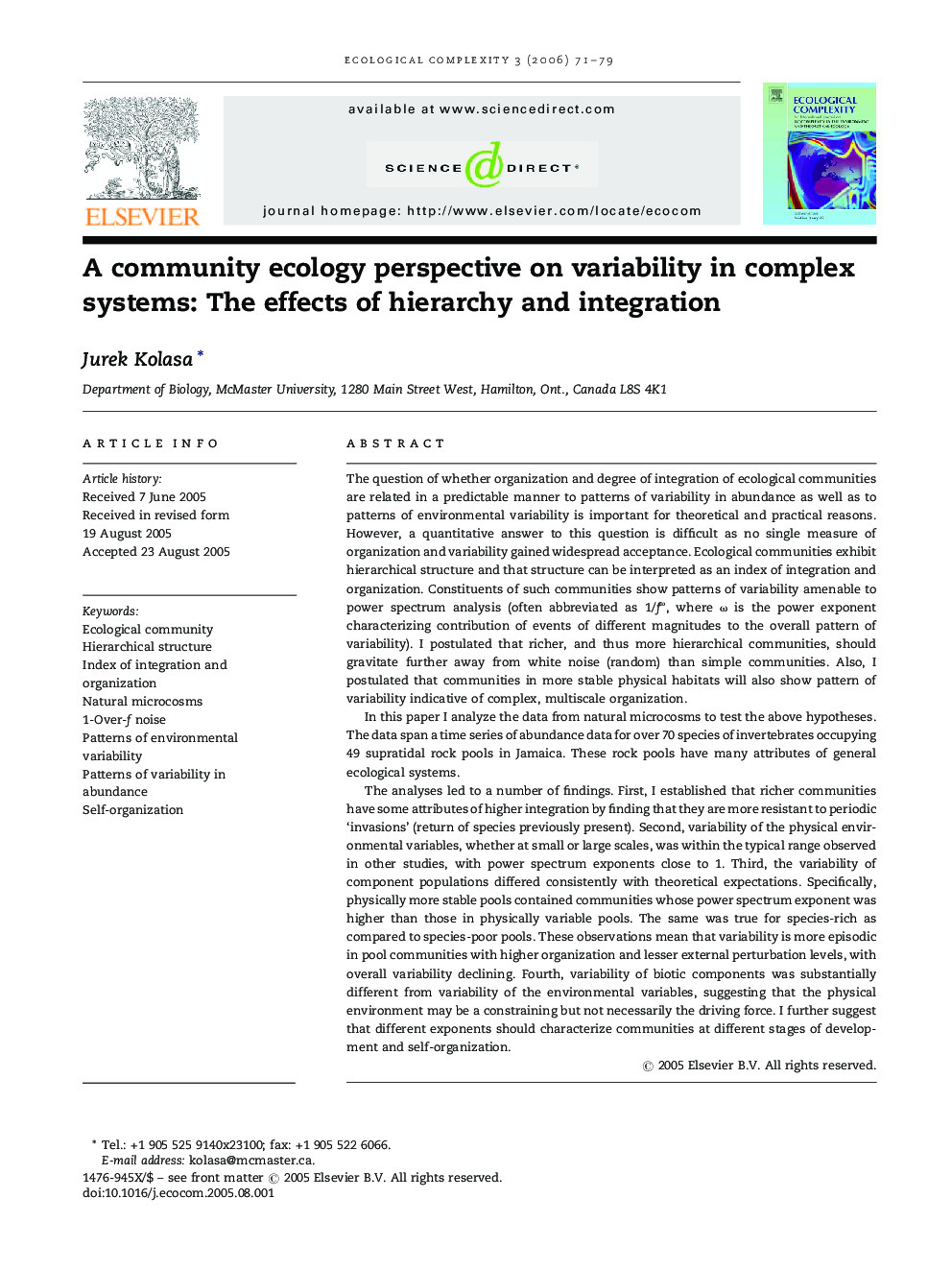| Article ID | Journal | Published Year | Pages | File Type |
|---|---|---|---|---|
| 4372781 | Ecological Complexity | 2006 | 9 Pages |
The question of whether organization and degree of integration of ecological communities are related in a predictable manner to patterns of variability in abundance as well as to patterns of environmental variability is important for theoretical and practical reasons. However, a quantitative answer to this question is difficult as no single measure of organization and variability gained widespread acceptance. Ecological communities exhibit hierarchical structure and that structure can be interpreted as an index of integration and organization. Constituents of such communities show patterns of variability amenable to power spectrum analysis (often abbreviated as 1/fω, where ω is the power exponent characterizing contribution of events of different magnitudes to the overall pattern of variability). I postulated that richer, and thus more hierarchical communities, should gravitate further away from white noise (random) than simple communities. Also, I postulated that communities in more stable physical habitats will also show pattern of variability indicative of complex, multiscale organization.In this paper I analyze the data from natural microcosms to test the above hypotheses. The data span a time series of abundance data for over 70 species of invertebrates occupying 49 supratidal rock pools in Jamaica. These rock pools have many attributes of general ecological systems.The analyses led to a number of findings. First, I established that richer communities have some attributes of higher integration by finding that they are more resistant to periodic ‘invasions’ (return of species previously present). Second, variability of the physical environmental variables, whether at small or large scales, was within the typical range observed in other studies, with power spectrum exponents close to 1. Third, the variability of component populations differed consistently with theoretical expectations. Specifically, physically more stable pools contained communities whose power spectrum exponent was higher than those in physically variable pools. The same was true for species-rich as compared to species-poor pools. These observations mean that variability is more episodic in pool communities with higher organization and lesser external perturbation levels, with overall variability declining. Fourth, variability of biotic components was substantially different from variability of the environmental variables, suggesting that the physical environment may be a constraining but not necessarily the driving force. I further suggest that different exponents should characterize communities at different stages of development and self-organization.
